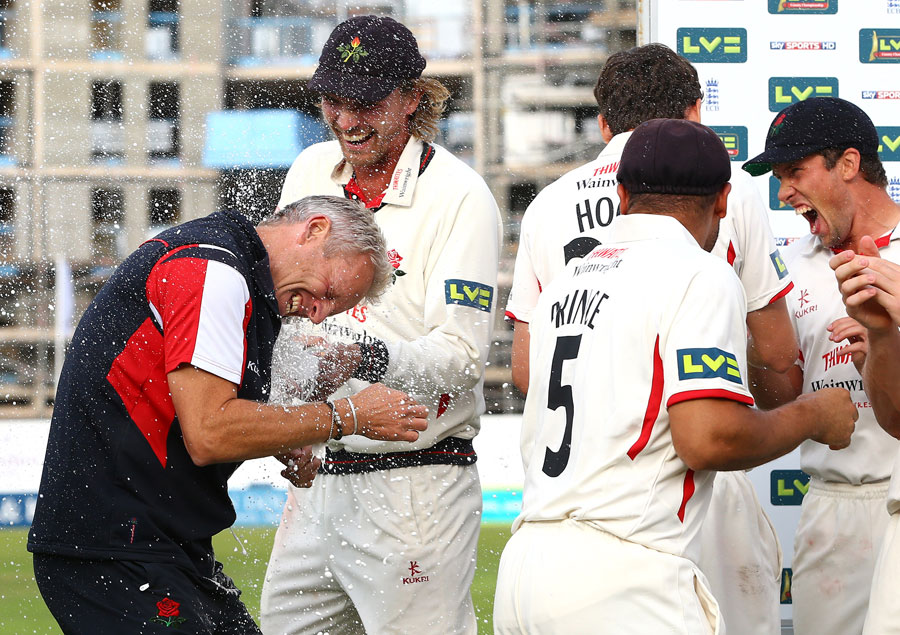Sometimes the harder you look at something, the more confusing it seems. Thirty years ago we didn't even have national cricket coaches. Now their appointments, successes, struggles and everything in between are endlessly dissected and considered every bit as newsworthy as the comings and goings of players themselves.
At times we're overly critical of them and at times we probably don't look clearly enough or with sufficient perspective when we shower them with praise. England's recent appointment of Peter Moores is interesting from a number of perspectives and probably encompasses everything that is good and bad about the way we discuss modern cricket coaching.
Here you have a guy who is widely acknowledged as an excellent technical coach, who in his previous attempt at the top job made the mistake of spectacularly failing to manage his relationship with his captain and star player. This kind of personality clash can be inevitable in the workplace but it's poison for coaches, especially when the other guilty party is a once-in-a-generation talent. The buck always stops with the coach, so much so that it almost makes you wistful for the days before they even existed to be blamed by players, fans and media.
On the ABC's Offsiders programme earlier in the year, Gideon Haigh wondered whether Australia's football league, the A League, was "addicted to the smell of death" when it came to the frequent dismissal of managers. Haigh noted, "The attrition rate amongst coaches is very high. It's almost like it's become ritualised, the sense of, 'Who is in the hot seat?' and 'Who is in the tumbrel next?'" The media and fans feed off one and other in that regard and while football codes are still far more susceptible to this mentality than cricket, the curve is trending rather worryingly in the same direction.
It's a bleak situation to ponder, no matter how high the financial rewards offered to modern coaches or the economic factors that hinge on the sustained high performance of their teams. Though it's easy to draw certain parallels between coaches and the cult that surrounds high-powered CEOs, it's with some irony that you have to note that even the most scandal-plagued among the latter rarely receive the same amount of heat in the media as sports coaches. Failures of big business are abstract in some ways, even when they tug at our purse strings. We take sporting failures far more personally.
When speaking of his former national coach Bob Simpson, the first man to fill that position full time and a cornerstone figure in Australia's emergence from the doldrums of the mid-1980s, David Boon theorised that coaches shouldn't stay in their positions for longer than four to five years. Any longer than that and fatigue, complacency or staleness might make lethal encroachments. In modern terms Boon might actually revise that estimate down even lower, because the spiritual toll taken by the relentless demands of coaching at the highest level must be wearying.
Perhaps Andy Flower's brand of dull, robotic, computer-driven managerialism is something closer to a defence mechanism against all of the forces that come bearing down on the modern coach. In that sense, each piece of impersonal protocol and procedure actually places the coach at incrementally farther distances from outsiders, from negativity, but also, it must be acknowledged, positivity and new modes of thinking.
Of course the flip side of the coin that tells us it's the coach's fault when everything is going wrong is that when a team is a raging success, little or no credit is generally attributed to the gaffer. John Buchanan's reign as Australia coach is the best example, obviously. There's no doubt he had a mighty group of players at his disposal but there's also every chance that he, to paraphrase Steve Waugh, got the extra couple of per cent out of them that pushed them on to greatness.
To be positive, I guess there is now the sense that with Kevin Pietersen out of the frame, Moores might now achieve some of the unfinished business from his short-lived first term at the helm of England. What will inevitably nag at him, though, is that at some point he'll be sacked again. Nearly every coach is, eventually. His methods probably won't change dramatically at any point. England will have successful patches and they'll also have unsuccessful patches. In a purely mathematical sense, Moores' fate and the length of his second tenure really hinges on how India and Australia, England's most frequently encountered opponents, develop in the next couple of years.
The same goes for Darren Lehmann, who famously brought the fun back into the Australian dressing room and was one of a team of staff who coaxed the best out of Mitchell Johnson for one golden summer. Sometime in the next few years there'll probably be a slump and he'll be discarded too, just like Mickey Arthur and Tim Nielsen were before him. Hopefully he'll go with a little more dignity, sure, but he knows they'll get him at some point.
All of this really begs the question: if you're a high-level cricket coach with aspirations to maintain a lucrative and lasting career, why would you not do as Victorian assistant coach Simon Helmot recently did and step away from the first-class arena altogether to specialise in the burgeoning T20 format? Jobs are seemingly easier to come by, pay rates range on a scale between handsome and obscene (probably better than all other coaching jobs) and the time away from home is far less demanding.
Say what you like about the IPL and the BBL and the CPL, but loyalty can't be any thinner on the ground there than it is in the international coaching ranks.

No comments:
Post a Comment